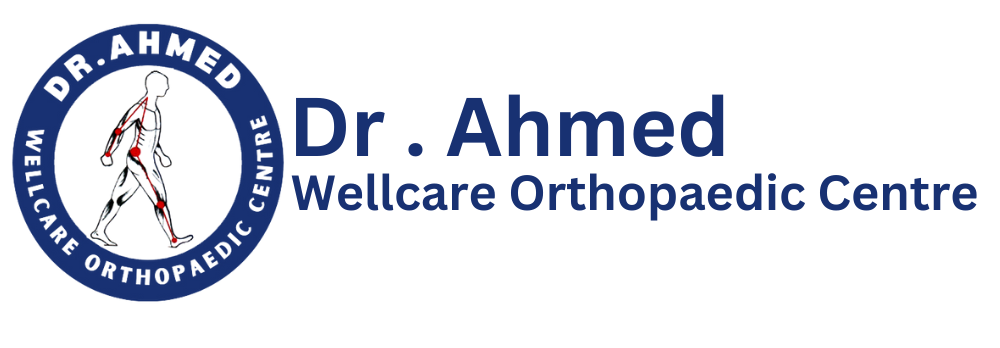What is Orthopaedic Surgery?
Orthopaedic surgery is a specialized branch of medicine focused on diagnosing, treating, and preventing conditions related to the musculoskeletal system, which comprises bones, joints, ligaments, tendons, and muscles. This crucial field addresses a diverse range of ailments, from acute injuries to chronic disorders that impair mobility and quality of life. Orthopaedic surgeons play a vital role in this discipline, utilizing both surgical and non-surgical methods to restore function and alleviate pain.
The musculoskeletal system is complex, with its components intricately working together to facilitate movement and support the body. Fractures, arthritis, and sports-related injuries are among the most common conditions requiring orthopaedic intervention. Fractures can result from falls, accidents, or sports, leading to significant pain and functional impairment. Arthritis, particularly osteoarthritis and rheumatoid arthritis, involves the degeneration of joint tissues, resulting in chronic pain and stiffness. Sports-related injuries, including ligament tears, tendinitis, and muscle strains, often necessitate specialized orthopaedic care to promote recovery and prevent further damage.
Orthopaedic surgeons utilize an array of diagnostic tools, such as X-rays, MRI scans, and physical examinations, to assess the extent of these conditions. Once a diagnosis is established, they develop a tailored treatment plan that may include physical therapy, medication, or surgical intervention when necessary. Patient education is paramount in this process, ensuring individuals understand their conditions, treatment options, and the implications of their choices. Informed consent is a fundamental aspect of the patient-surgeon relationship, highlighting the importance of transparency in orthopaedic practices.
This comprehensive approach not only addresses the physical aspects of musculoskeletal disorders but also emphasizes the importance of empowering patients with knowledge, ultimately enhancing their recovery and overall well-being.
Types of Orthopaedic Surgery
Orthopaedic surgery encompasses a range of procedures designed to treat musculoskeletal conditions, injuries, and diseases. These surgeries can generally be categorized into several types, each addressing specific issues and employing varying techniques. One of the most prominent types is joint replacement surgery, which includes procedures like hip and knee replacements. These are typically indicated for patients suffering from severe arthritis or joint degeneration, where the damaged joint is replaced with an artificial implant. The expected outcomes often include significant pain relief and improved mobility, although recovery can take several months and rehabilitation is essential to maximize results.
Another significant category is arthroscopic surgery, a minimally invasive technique used for diagnosing and treating joint problems. This procedure is particularly effective for torn ligaments or cartilage repair. Surgeons utilize small incisions and a tiny camera called an arthroscope to perform the surgical intervention. The key advantages of this approach include reduced postoperative pain, shorter recovery times, and lower risk of complications compared to traditional open surgeries.
Spinal surgeries represent another critical area within orthopaedics. Procedures such as spine decompression and fusion are commonly performed to alleviate nerve compression, alleviate pain, and stabilize the spine. These surgeries are often necessary for conditions like herniated discs or spinal stenosis. While the recovery period may vary based on the specific intervention, advancements in surgical techniques and postoperative care have significantly improved patient outcomes.
Lastly, trauma surgery focuses on repairing fractures and other acute injuries resulting from accidents or falls. With the integration of advanced imaging technologies and minimally invasive approaches, orthopaedic surgeons can achieve precise repairs, leading to faster recoveries. Each of these surgery types plays a vital role in restoring function and quality of life for patients suffering from musculoskeletal issues.
The Orthopaedic Surgery Process: What to Expect
Understanding the orthopaedic surgery process is essential for patients considering this type of intervention. It typically begins with the pre-operative phase, during which a thorough initial consultation takes place. During this meeting, the orthopaedic surgeon will discuss the patient’s medical history, including any previous injuries or surgeries, and then perform a physical examination to assess the specific musculoskeletal issues. Depending on the case, diagnostic imaging such as X-rays, MRI, or CT scans may be ordered to help understand the underlying problem more clearly.
Once the necessary information is gathered, the surgeon will explain the proposed procedure, discussing the expected outcomes and potential risks involved. This is also the time when any pre-surgical assessments will occur, including blood tests and an evaluation of the patient’s overall health to ensure they are fit for surgery.
On the day of the surgery, patients are generally advised to arrive early to allow time for the pre-operative preparations. Anesthesia options will be discussed beforehand, as patients may choose between general anesthesia or regional methods, such as spinal blocks, depending on the procedure. Once the patient is prepared and the surgical team is ready, the operation will commence.
Post-operative care is crucial in the recovery journey. After the procedure, the patient will be monitored in a recovery area to ensure their vital signs are stable and to manage any immediate pain. Depending on the type of orthopaedic surgery performed, rehabilitation may begin soon after. This often involves physical therapy aimed at restoring mobility and strength.
Recovery timelines can vary greatly depending on the type and complexity of the surgery. Therefore, attending follow-up appointments is vital, as these allow the surgeon to monitor healing progress and make any necessary adjustments to the rehabilitation plan.
Future Directions in Orthopaedic Surgery
The field of orthopaedic surgery is on the brink of a transformative evolution, driven by innovative technologies and practices that promise to enhance patient care and surgical outcomes. One of the most notable advancements is the increasing integration of robotic-assisted surgery. This technology allows surgeons to perform procedures with enhanced precision and control, minimizing invasiveness and potentially reducing recovery time for patients. As robotics continue to advance, the potential for improved accuracy in joint replacements and spine surgeries becomes more pronounced.
Additionally, regenerative medicine is gaining traction within the orthopaedic community, with techniques such as stem cell therapy emerging as viable options for treating various musculoskeletal conditions. By harnessing the body’s innate healing capabilities, these techniques aim to repair damaged tissues in a way that traditional methods cannot. With ongoing research, the efficacy of these therapies continues to be evaluated, offering hope for more effective treatments in the future.
Another significant area of development in orthopaedic surgery is personalized patient care, which is increasingly being facilitated through the use of 3D printing technology. This innovative approach enables the creation of customized implants and prosthetics tailored to an individual’s specific anatomy, thereby enhancing compatibility and functionality. As 3D printing becomes more commonplace, it is expected to revolutionize how surgeons approach various cases, from joint replacements to fracture repairs.
Furthermore, ongoing research and clinical trials are essential components driving the future of orthopaedic surgery. These initiatives not only focus on refining existing techniques but also explore emerging technologies that could significantly improve patient quality of life. As the orthopaedic field continues to evolve, the integration of these advancements will likely pave the way for improved treatment methodologies, ultimately resulting in better health outcomes for patients.
Frequently Asked Questions?
Q. What is orthopedic surgery?
Ans. Orthopedic surgery is a branch of medicine focused on diagnosing, treating, and preventing disorders related to the musculoskeletal system, including bones, joints, ligaments, tendons, and muscles.
Q. What are the common types of orthopedic procedures?
Ans. Common orthopedic procedures include joint replacement (e.g., hip and knee), arthroscopy, fracture fixation, ligament reconstruction, spinal surgery, and tendon repair.
Q. What conditions can be treated with orthopedic surgery?
Ans. Orthopedic surgery can address a wide range of conditions, including arthritis, fractures, sports injuries, degenerative disc disease, tendonitis, and congenital deformities.
Q. How do I know if I need orthopedic surgery?
Ans. Consultation with an orthopedic specialist is crucial. They will evaluate your symptoms, medical history, and imaging tests to determine if surgery is necessary or if alternative treatments are available.
Q. What are the risks associated with orthopedic surgery?
Ans. As with any surgery, risks include infection, bleeding, blood clots, anesthesia complications, and potential complications related to the specific procedure performed.
Q. What should I expect during the recovery process?
Ans. Recovery varies depending on the type of surgery but generally includes pain management, physical therapy, and gradual return to activities. Your surgeon will provide a personalized recovery plan.
Q. How long does it take to recover from orthopedic surgery?
Ans. Recovery time depends on the procedure and individual factors but can range from a few weeks to several months. Follow-up appointments will help track your progress.
Q. Will I need rehabilitation after surgery?
Ans. Yes, most orthopedic surgeries require some form of rehabilitation or physical therapy to restore mobility, strength, and function to the affected area.
Q. What non-surgical options are available before considering surgery?
Ans. Non-surgical treatments may include physical therapy, medications (like NSAIDs), corticosteroid injections, lifestyle modifications, and braces or splints.
Q. How can I prepare for orthopedic surgery?
Ans. Preparation may include pre-operative assessments, following your surgeon’s guidelines for medications and diet, arranging post-surgery care, and setting realistic expectations for recovery.









